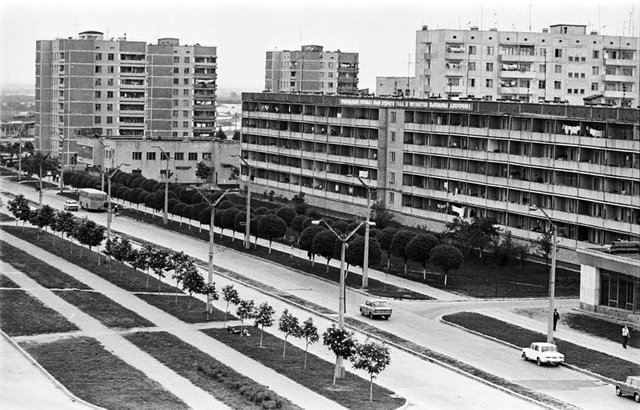You are viewing a single comment's thread from:
RE: Your Standard National Park Trail
I find it always amazing to see, how nature conquers back place that were abandoned by people. And it doesn't even take all that long.
A good example Is Prypiat, the city next to Chernobyl nuclear power plant in Ukraine, that blew up in the mid 80s. It was evacuated inside one day, and is left like that ever since.
The cool thing is, you can take a look at it on Google Street View:
https://www.google.com/maps/@51.40804,30.0556789,2a,75y,23.44h,84.79t/data=!3m6!1e1!3m4!1srBe9SvnBP3SozwADD320Ag!2e0!7i13312!8i6656
This is not some forest - its in the former center of the city. After more than 30 years without people. All those trees have grown since, before it looked like that:
Wait--they let the Google Street View car in there to take pictures?!
Have you seen the TV show, Life After People? (We may have discussed this already.) It examines what might happen in the years, decades, and centuries if people suddenly disappeared. Fascinating.
Yes, actually it was a car from a local tourist company. They do sideseeing tours through Prypjat and the surrounding area. It's possible to be there for a short time, if you avoid some radiation hot spots.
But nobody is supposed to live there permanently. Its said that some people do it anyway, because they refused to leave or have no money to go somewhere else or whatever.
Yes, i have seen that TV show. Prypjat matches that desciption pretty well. But things seem to progress faster than they say in the show. The accident was only 35 years ago, and look how over grown everything already is. In 100 years it will probably even be difficult to find the place again.
Could be--weathering and foliage have a huge effect. Personally, if I got an offer I'd be tempted to move there--I'm over having other people living close to me. Maybe they'll be good neighbors, maybe they won't, but it sure would be nice to walk into my back yard without worrying about whether anyone other than a spy satellite is watching me. A little radiation? Bah. :-)
Well, it's not quite clear what effect it has to live there permanently. At least most of the wildlife is thriving after the people have gone. A few have died out, though.
The biggest problem is the still existing power plant, where the exploded reactor is covered with some kind of dome. To be safe, this dome has to last 10.000 years or something, which is not very likely. So the danger is far from being managed.
And then there are the "hot spots". Those are small areas with a critical radiation level, that are randomly spread in the region. That can be somewhere in the forest, or in a building in Prypiat, or where ever. And they sometimes shift as well. Nobody really knows why that is.
But if you are ok with having a Geiger counter on you all the time, it could be a place for you. :)
Yes, and that dome wasn't exactly built under the best possible construction conditions, either.
No, everything is pretty difficult, being so close to the melt down site. It was a huge project to build the new dome and then move it over the reactor. And a extremly expensive one, too. And still, in a few decades they will have to replace it again. That's what they called "managable risk" connected to nuclear power, I guess.
The Soviets weren't exactly renown for their safety precautions, and now the Russians are paying for it.
I wish the Russians would pay for it. Unfortunatly, Chernobyl is in the Ukraine, now a independent country. And chronically broke. They could have never financed the new dome alone. So, it went like it usually does: they let a hat go round among the EU countries - since we are the ones who get the fall out if the old concrete dome fails. More details you can find here:
https://en.wikipedia.org/wiki/Chernobyl_New_Safe_Confinement